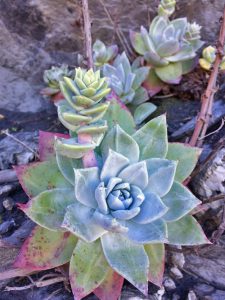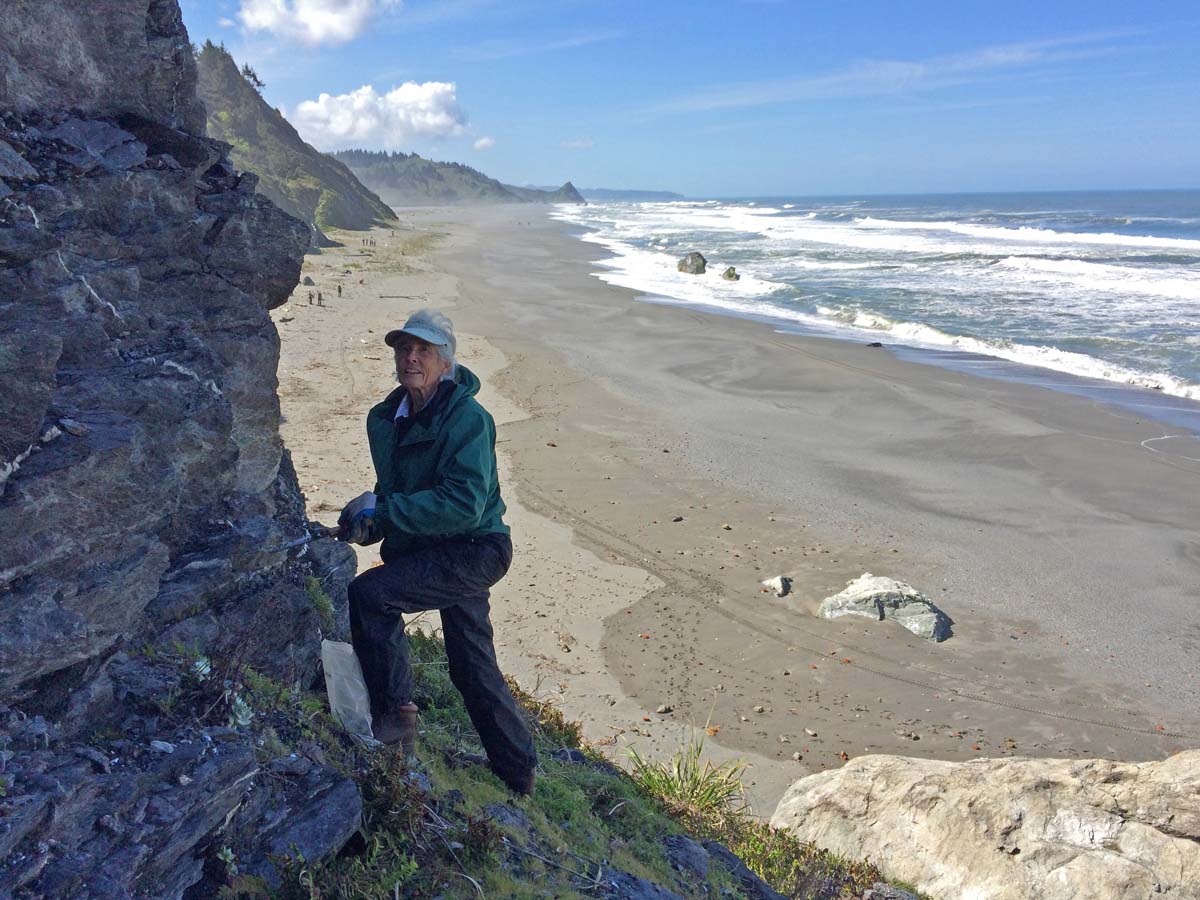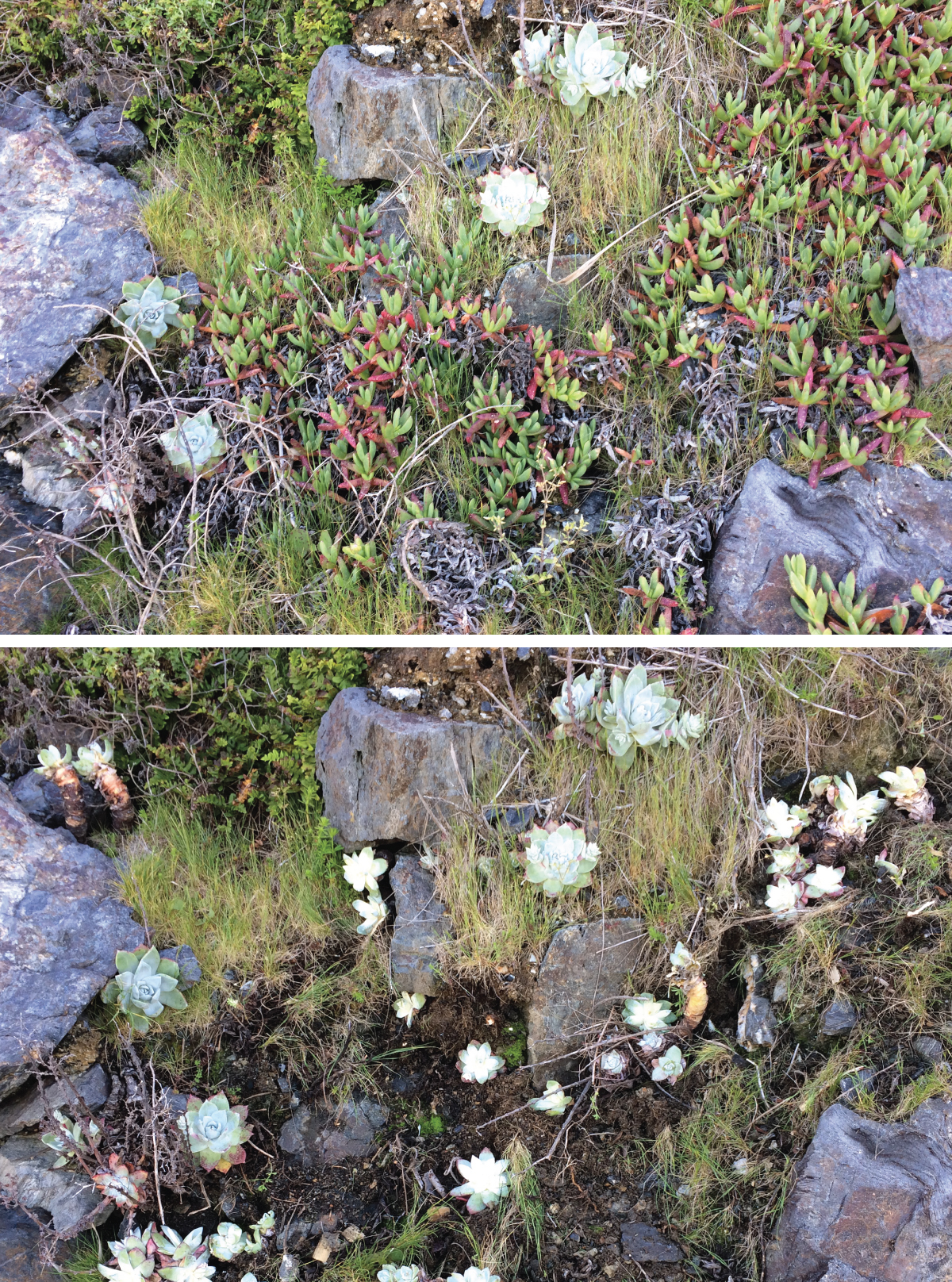We are collectors
Recently, it was announced that the California Department of Fish and Wildlife caught folks poaching Dudleya farinosa from coastal Mendocino and Humboldt counties. The tip came in from a Postmaster who noticed dirt spilling from a box being shipped to China. Conversations started, one post office talked to another, and they realized poachers were moving from post office to post office shipping boxes of the charismatic Dudleya farinosa. One of the postal workers then reported the suspicious activity on CalTip and this is now an active international poaching case.

Game wardens working coastal Humboldt and Mendocino counties are mostly looking for poachers taking abalone. This situation was, to say the least, a new dilemma–something never seen before. Conversations started and partnerships quickly grew. California Fish and Game started working with Redwood National and State Parks, the California Native Plant Society and a Dudleya replanting party was organized.
The Southwest Dudleya Dilemma

The genus Dudleya is in the family Crassulaceae which survives in areas that see dry and/or cold periods, often coupled with water scarcity. In California, Crassulaceae is well represented by charismatic genera like Sedum and Dudleya. Both genera have an uncanny ability to store resources, either in leaves or in the root-and-stem-like caudex, to survive sub-optimal climate variations. The succulent perennials in the genus Dudleya (about 45 species) are restricted to southwest North America and are highly prized in the succulent horticultural trade.
Nature lovers have been long-fascinated by natural rock gardens decorated with Dudleya and Sedum. These plant are often locally abundant, highly charismatic, and easy to transport so it is understandable why they are popular with collectors.
Here are some ideas for how we protect California’s unique flora:
- Promote leave no trace ethics.
- Encourage collectors to purchase plants from certified nurseries.
- Obscure geoprivacy settings on databases like iNaturalist and Calflora.
- Report poaching! From CalTip: Anyone who believes they are witness to unlawful poaching or pollution activity is encouraged to call CalTIP, CDFW’s confidential secret witness program, at (888) 334-2258 or send a text to tip411. Both methods allow the public to provide wildlife officers with factual information to assist with investigations. Callers may remain anonymous, if desired, and a reward can result from successful capture and prosecution.


https://www.instagram.com/p/Bi4Az-5glG7/?hl=en

Sad to see this but thanks for raising awareness!
Mixed bag…but I think public awareness is the only way this will be curbed.
Thanks, North Coast Chapter and Michael, for the important outreach and restoration efforts!